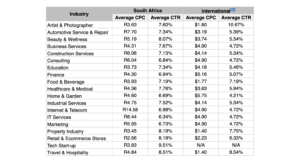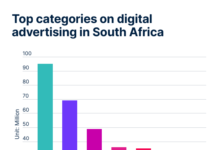Michelle Geere, CEO of Adbot, says for businesses new to Google Ads, a lack of knowledge and experience means that many SMME owners are unsure of how much to spend on the platform.
Every year, Google’s search engine processes over 1.2 trillion searches worldwide – that’s roughly 3.5 billion searches per day, or just under 146 million searches every hour. With these figures only set to climb, companies around the world are paying more attention to the internet giant’s ability to reach and engage new customers. Businesses are in-turn dedicating more of their budget and resources to the platform, with Google Ads quickly becoming a staple for most commercial marketing strategies.
This is no different in South Africa, where online sales tactics experienced a stark increase in uptake, thanks in part to stringent lockdown measures, which seriously impacted the ability of small, medium and micro-enterprises (SMMEs) to do business.
Small businesses have to be very deliberate in how they assign their limited resources. However, the answer to this question will vary on the type of business; the product it sells; the industry it operates in; and the economic climate at the time.
This is because Google works on an auction-based structure. Unlike print advertisements, which are sold at a fixed cost, the cost of running Google Ads will fluctuate on the number of businesses vying for the same visibility. Therefore, marketers must analyse how much their industry competitors are spending and assess how this equates to their ability to reach potential customers (Impression Share); how much it costs for each person reached to click on the advertisement (Cost-per Click); and the likelihood that someone who sees the advertisement will in-fact engage with it (Click Through Rate).
Except, this then creates a new challenge: how can you properly assess the performance of your industry if the only information publicly available is for competitors based in markets like the United States and Europe? These economies are larger and home to exponentially more businesses than South Africa.
When you consider how Google Ads are structured, this means that there are more businesses in these over-saturated, foreign markets vying for the same attention. This in-turn forces businesses in these economies to spend more money to achieve results which should theoretically cost far less, in a less densely populated market like South Africa.
Without relevant data, South African businesses are forced to base their Google Ad spend on information and statistics that do not make sense for the local market. Worse still, this even deters some businesses from harnessing the opportunity presented by Google Ads, as they see the wrongfully inflated prices as too expensive for their limited means.
Thankfully, this is all about to change. For the first time, South African’s now have access to Google Ad data from local industry, generated by Adbot – a Cape Town-based business which harnesses artificial intelligence and machine learning to help small business owners successfully advertise on Google.
To help SMME owners get a realistic average of what they can expect to spend on their Google Ads in the local market, Adbot spent the past year collecting various data points from our client base of some 1000 small businesses across the country. From here, we were able to calculate various averages for indicators such as the Cost-per Click and Click-through Rate for a range of industries. These findings were then compared to the figures shared by international research bodies.

When reading these statistics, it is important to remember that the trick to Google Ads is to try maximise your Click-through Rate while minimising your Cost-per Click. These findings show, then, that the South African market is far less saturated than those in the United States and Europe. Therefore, local SMME owners advertising on Google Ads today are able to reach a larger share of the audience for less spend than the international average.
The key, however, is to get in early. Businesses that are the first to adopt Google Ads into their marketing strategies will benefit from lower costs for higher gains. They will have a huge advantage over their competitors, who might only realise the opportunity later.
The data included in this article has been sourced from Adbot’s own data set and is based on a very specific customer base. We are still a young startup and our data will grow as we grow. The aim of this data is to help SME owners get a realistic average of what they can expect in the local market.
ADBOT
https://adbot.co.za/










